-
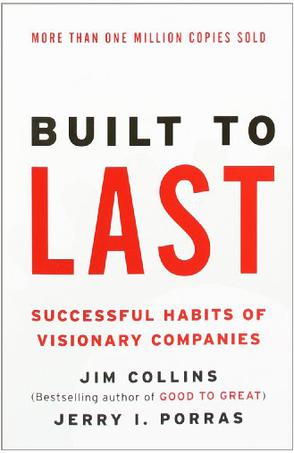
Built to Last
在线阅读本书 Find out what makes the truly exceptional companies different from other companies. ""Built to Last" . . . is one of the most eye-opening business studies since "In Search of Excellence."--"USA Today." Publisher Comments: HarperBusiness Essentials Note from Jim Collins and Jerry Porras, authors of "Built to Last" As we sat down to write this author's note for the HarperBusiness Essentials edition, "Built to Last" celebrated its sixth year on the Business Week bestseller list. Far beyond what we would have dared to imagine, "Built to Last" has lived up to its own name. Ironically, we can claim no credit for the title. Creativity often sprouts from frustration, and our editors in 1994 were frustrated in the extreme. We had inserted a clause into our publishing contract that gave us final right of approval, and as the publication date neared, we just kept vetoing titles. In all, something on the order of 127 different options fell by the wayside, from "You are the Competition" to "Research Results on Visionary Companies." The situation finally escalated to the executive editor for HarperCollins, who went home for the weekend and returned on Monday morning with an idea. "Here," he said, throwing a three by five note card on our editor's desk, "see if they'll go for this." On it he'd written the simple phrase "Built to Last." And we had our title. In retrospect, "Built to Last" is a great title, but it is also the wrong title. Not from a marketing standpoint (don't get us wrong, we'd still keep it), but from the standpoint of what this book is really all about. "Built to Last," it turns out, is not fundamentally about building to last. It is about building something that is worthy of lasting — about building a company of such intrinsic excellence that the world would lose something important if that organization ceased to exist. Implicit on every page is a simple question: Why on Earthwould you settle for creating something mediocre that does little more than make money, when you can create something outstanding that makes a lasting contribution as well? And in the end, as the evidence from our research showed, those who make a lasting contribution make more money over the long run anyway. If we were rewriting "Built to Last" today, we would not overturn any of the basic concepts; they are timeless principles. We certainly know more about great companies than we did in 1994, and there is certainly much that we could add, but our faith in the fundamental findings has not faded. Indeed, we are more convinced than ever that building an enduring great company — one that is truly worthy of lasting — is a noble cause. Jim Collins and Jerry Porras March 31, 2002 Synopsis: Drawing upon a six-year research project at the Stanford University Graduate School of Business, James C. Collins and Jerry I. Porras took eighteen truly exceptional and long-lasting companies and studied each in direct comparison to one of its top competitors. They examined the companies from their very beginnings to the present day — as start-ups, as midsize companies, and as large corporations. Throughout, the authors asked: "What makes the truly exceptional companies different from the comparison companies and what were the common practices these enduringly great companies followed throughout their history?" Filled with hundreds of specific examples and organized into a coherent framework of practical concepts that can be applied by managers and entrepreneurs at all levels, Built to Last provides a master blueprint for building organizations that will prosper long into the 21st century and beyond. From Amazon.com Built to Last became an instant business classic. This audio abridgement is read by the authors, who alternate chapters. Collins is a bit breathlessly enthusiastic, but clear and interesting; Porras, unfortunately, is poorly inflected and wooden. They set out to determine what's special about "visionary" companies--the Disneys, Wal-Marts, and Mercks, companies at the very top of their game that have demonstrated longevity and great brand image. The authors compare 18 "visionary" picks to a control group of "successful-but-second-rank" companies. Thus Disney is compared to Columbia Pictures, Ford to GM, and so on. A central myth, according to the authors, is that visionary companies start with a great product and are pushed into the future by charismatic leaders. Usually false, Collins and Porras find. Much more important, and a much more telling line of demarcation between a wild success like 3M and an also-ran like Norton, is flexibility. 3M had no master plan, little structure, and no prima donnas. Instead it had an atmosphere in which bright people were not afraid to "try a lot of stuff and keep what works." If you listen to this audiocassette on your daily commute, you may discover whether you are headed to a "visionary" place of work--and, if so, whether you are the kind of employee who fits your employer's vision. (Running time: two hours, two cassettes) --Richard Farr From Library Journal What makes a visionary company? This book, written by a team from Stanford's Graduate School of Business, compares what the authors have identified as "visionary" companies with selected companies in the same industry. The authors juxtapose Disney and Columbia Pictures, Ford and General Motors, Motorola and Zenith, and Hewlett-Packard and Texas Instruments, to name a few. The visionary companies, the authors found out, had a number of common characteristics; for instance, almost all had some type of core ideology that guided the company in times of upheaval and served as a constant bench mark. Not all the visionary companies were founded by visionary leaders, however. On the whole, this is an intriguing book that occasionally provides rare and interesting glimpses into the inner workings and philosophical foundations of successful businesses. Recommended for all libraries. Randy L. Abbott, Univ. of Evansville Lib., Ind. Book Dimension Height (mm) 204 Width (mm) 134 点击链接进入中文版: 基业长青(珍藏版) -

Small Is the New Big
More provocative business thinking from the bestselling author of Purple Cow and All Marketers Are Liars As one of today’s most influential business thinkers, Seth Godin helps his army of fans stay focused, stay connected, and stay dissatisfied with the status quo, the ordinary, the boring. His books, blog posts, magazine articles, and speeches have inspired countless entrepreneurs, marketing people, innovators, and managers around the world. Now, for the first time, Godin has collected the most provocative short pieces from his pioneering blog—ranked #70 by Feedster (out of millions published) in worldwide readership. This book also includes his most popular columns from Fast Company magazine, and several of the short e-books he has written in the last few years. A sample: • Bon Jovi And The Pirates • Christmas Card Spam • Clinging To Your Job Title? • How Much Would You Pay to Be on Oprah’s Show? • The Persistence of Really Bad Ideas • The Seduction of "Good Enough" • What Happens When It's All on Tape? • Would You Buy Life Insurance at a Rock Concert? Small is the New Big is a huge bowl of inspiration that you can gobble in one sitting or dip into at any time. As Godin writes in his introduction: "I guarantee that you'll find some ideas that don’t work for you. But I’m certain that you're smart enough to see the stuff you’ve always wanted to do, buried deep inside one of these riffs. And I’m betting that once inspired, you’ll actually make something happen." -
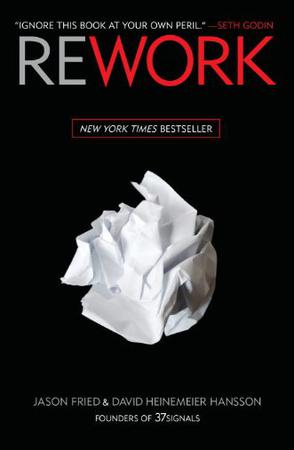
Rework
"Jason Fried and David Hansson follow their own advice in REWORK, laying bare the surprising philosophies at the core of 37signals' success and inspiring us to put them into practice. There's no jargon or filler here just hundreds of brilliantly simple rules for success. Part entrepreneurial handbook for the twenty-first century, part manifesto for anyone wondering how work really works in the modern age, REWORK is required reading for anyone tired of business platitudes." --Chris Anderson, New York Times bestselling author of THE LONG TAIL and FREE "House-husband, housewife, Fortune 500 CEO, cab driver, restaurateur, venture capitalist -- this is 'the book for you,' a book of true wisdom, business wisdom, life wisdom. The clarity, even genius, of this book actually brought me to near-tears on several occasions. Just bloody brilliant, that's what!" --Tom Peters, New York Times bestselling author of IN SEARCH OF EXCELLENCE, THRIVING ON CHAOS and LEADERSHIP "If given a choice between investing in someone who has read REWORK or has an MBA, I'm investing in REWORK every time. This is a must read for every entrepreneur." --Mark Cuban, co-founder of HDNet and Broadcast.com and owner of the Dallas Mavericks "Inspirational...REWORK is a minimalist manifesto that's profoundly practical. In a world where we all keep getting asked to do more with less, the authors show us how to do less and create more." --Scott Rosenberg, Co-Founder of Salon.com and author of DREAMING IN CODE and SAY EVERYTHING "The brilliance of REWORK is that it inspires you to rethink everything you thought you knew about strategy, customers, and getting things done. Read this provocative and instructive book—and then get busy reimagining what it means to lead, compete, and succeed." --William C. Taylor, Founding Editor of Fast Company and coauthor of MAVERICKS AT WORK -
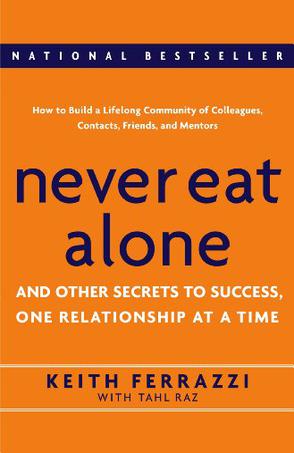
Never Eat Alone
在线阅读本书 Book Description YaYa CEO Ferrazzi works with "Inc." writer Raz to explain the guiding principles he has mastered over a lifetime of reaching out to explain what it takes to build the kind of lasting, mutually beneficial relationships that lead to professional and personal success. From Publishers Weekly The youngest partner in Deloitte Consulting's history and founder of the consulting company Ferrazzi Greenlight, the author quickly aims in this useful volume to distinguish his networking techniques from generic handshakes and business cards tossed like confetti. At conferences, Ferrazzi practices what he calls the "deep bump" - a "fast and meaningful" slice of intimacy that reveals his uniqueness to interlocutors and quickly forges the kind of emotional connection through which trust, and lots of business, can soon follow. That bump distinguishes this book from so many others that stress networking; writing with Fortune Small Business editor Raz, Ferrazzi creates a real relationship with readers. Ferrazzi may overstate his case somewhat when he says, "People who instinctively establish a strong network of relationships have always created great businesses," but his clear and well-articulated steps for getting access, getting close and staying close make for a substantial leg up. Each of 31 short chapters highlights a specific technique or concept, from "Warming the Cold Call" and "Managing the Gatekeeper" to following up, making small talk, "pinging" (or sending "quick, casual" greetings) and defining oneself to the point where one's missives become "the e-mail you always read because of who it's from." In addition to variations on the theme of hard work, Ferrazzi offers counterintuitive perspectives that ring true: "vulnerability... is one of the most underappreciated assets in business today"; "too many people confuse secrecy with importance." No one will confuse this book with its competitors. From Booklist Ferrazzi grew up in rural Pennsylvania, the son of a steelworker and a cleaning lady, yet his ability to connect with others led to a scholarship at Yale, a Harvard MBA, and a prestigious partnership at Deloitte Consulting. His skills at creating and maintaining a network of contacts are nothing short of those of a serious presidential contender. All business hopefuls seek to enter a sphere of players more powerful than themselves, and Ferrazzi says that sometimes all it takes is asking. The book is dense with suggestions. Seek out mentors to guide you and introduce you to the people you need to know and then become a mentor yourself. Use your initial conversation to show the other person what you have to offer them, and never keep score. Make others feel important by remembering their names and birthdays. And don't be afraid to open up and show vulnerability--it's a great icebreaker. Ferrazzi presents a whirlwind of ideas to widen your circle of contacts that goes way beyond the usual stale concepts of "networking." David Siegfried Book Dimension length: (cm)23.4 width:(cm)16 点击链接进入中文版: 别独自用餐 -
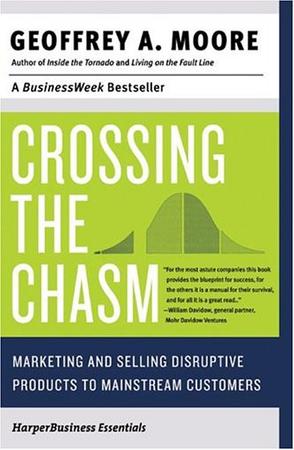
Crossing the Chasm
在线阅读本书 《Crossing the Chasm: Marketing and Selling Disrupti》:Moore provides an invaluable service to high-tech entrepreneurs and investors: he has identified the weak link in the marketing chain which makes the success of such ventures so unpredictable, and he outlines proven, specific techniques to address this challenge. At a time when the high-tech community in the U.S. cedes much of its once-held manufacturing advantage to the Far East and elsewhere, it is critical that these U.S.enterprises must retain superior marketing as a competitive advantage. Crossing the Chasm provides critical information for achieving this end. -
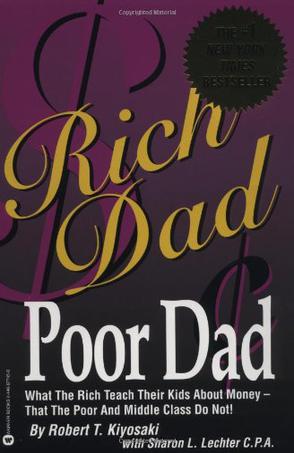
Rich Dad, Poor Dad
Rich Dad, Poor Dad chronicles the story of the authors two dads, his own father, who wa the superintendent of education in Hawaii and who ended up dying penniless and his best friends father who dropped out of school at age 13 and went on to become one of the wealthiest men in Hawaii. Kiyosaki uses the story of these two men and their varying financial strategies to illustrate the need for a new financial paradigm in order to achieve financial success in the new millennium.